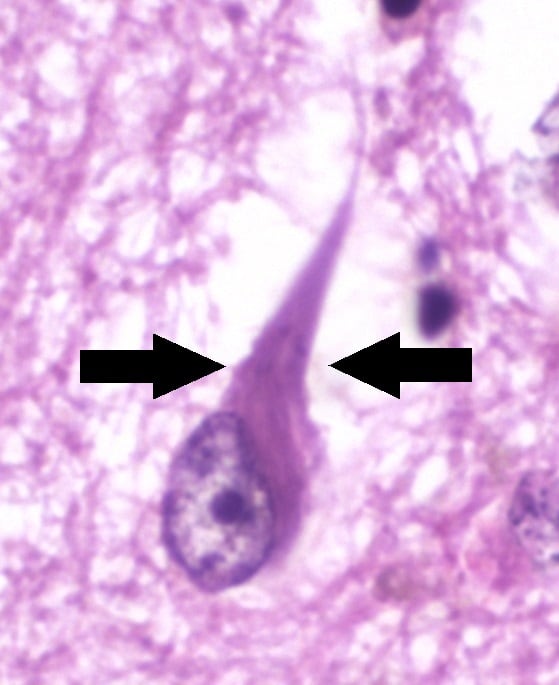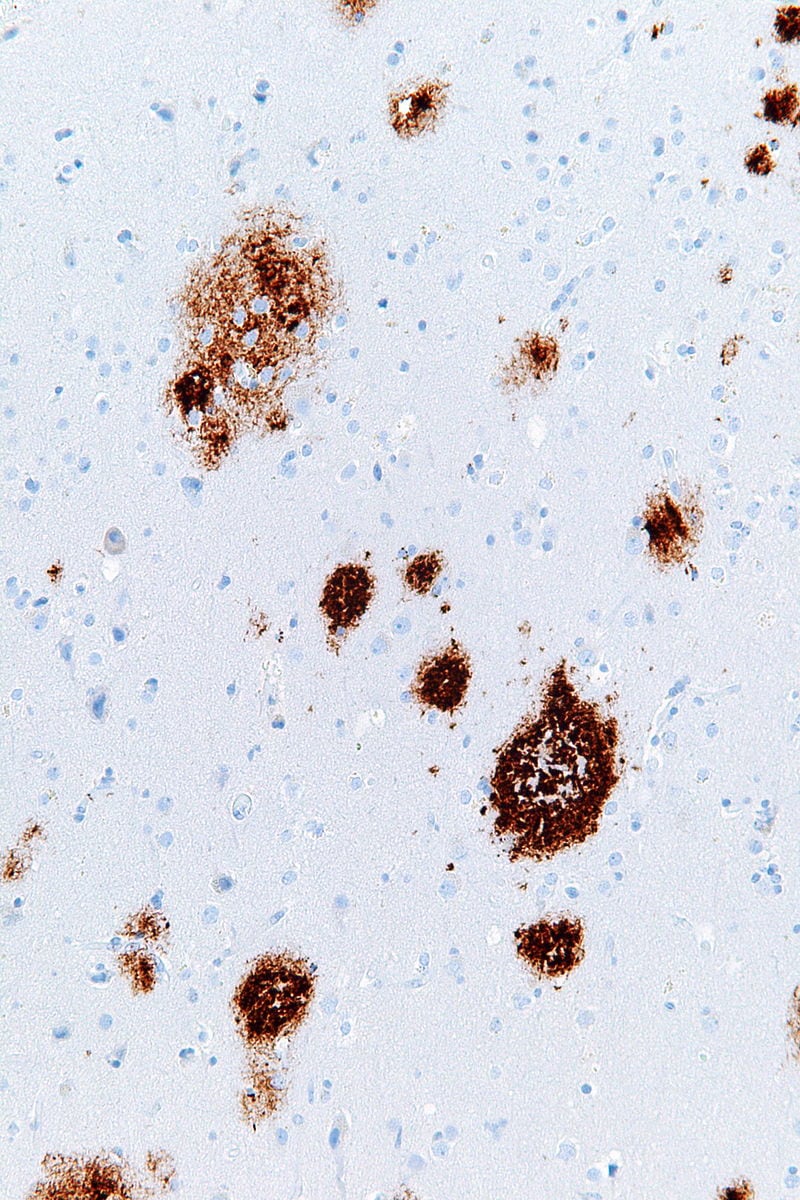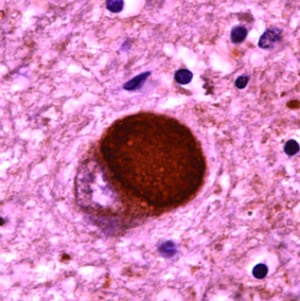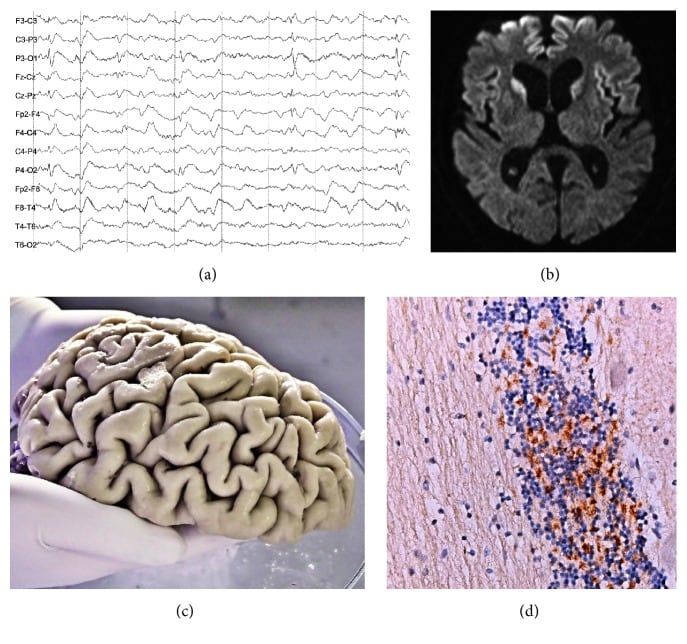Dementia is the loss of cognitive functioning—thinking, remembering, and reasoning—and behavioral abilities to such an extent that it interferes with a person’s daily life and activities. These functions include memory, language skills, visual perception, problem solving, self-management, and the ability to focus and pay attention. Some people with dementia cannot control their emotions, and their personalities may change.
Delirium is defined as a transient, usually reversible, cause of mental dysfunction and manifests clinically with a wide range of neuropsychiatric abnormalities presenting as waxing and waning levels of consciousness, tremors, illusions, hallucinations, disorientation etc.
Stupor is seen in a conscious person but they are in a state of psychomotor retardation from which they can be aroused by vigorous physical stimuli like calling out loudly, prodding etc.
Coma (unconsciousness) is a state of complete unresponsiveness, at least 1 hour in duration. Patients cannot be aroused by vigorous stimulation but grimacing may occur in response to noxious stimuli. Coma results from gross impairment of both cerebral hemispheres, and/or the ascending reticular activating system.
Brain death is defined as the irreversible loss of all functions of the brain, including the brainstem. The three essential findings in brain death are coma, absence of brainstem reflexes, and apnoea. Spinal reflexes may still be present.
(I) Alzheimer’s disease (AD): It is the most common cause of dementia in old people. It affects daily activities and is progressive. Pathological deposits of Abeta amyloid and accumulation of tau protein are seen in AD. Abeta amyloid is derived from APP or amyloid precursor protein by the action of enzymes called secretases. It is toxic to neurons. APP is coded by a gene on chromosome 21. Hence trisomy 21 or Down’s syndrome carries a high risk of AD with an early onset. Mutations in presenilin 1 and 2 genes (PSEN 1 and PSEN 2) on chromosome 14 and 1 respectively, can also cause early onset AD. APOE4 allele (chromosome 19) is associated with higher risk for AD while APOE2 carries decreased risk. Type 2 DM, hypertension, multiple concussions, elevated homocysteine or chronic inflammation predispose to AD.
Abeta amyloid aggregates in the form of amyloid fibrils are seen characteristically in the hippocampus and entorhinal cortex of the frontal cortex and medial temporal lobe. Amyloid deposition causes neuronal cell loss, increased apoptosis, excitotoxicity, damage to synapses and free radical injury. There is a loss of cholinergic neurons in the basal forebrain, decreased acetylcholine levels and a decrease in the acetylcholine synthesizing enzyme choline acetyltransferase in the cerebral cortex.
On gross examination, the brain shows cerebral cortical atrophy especially in the hippocampal area, but spares the primary motor, sensory and visual areas. Gyri appear narrow while sulci widen. Lateral ventricles appear dilated. Amyloid plaques (AP) and neurofibrillary tangles (NT) and their areas of distribution point to a diagnosis of AD. Histopathological changes first appear in the entorhinal cortex. In severe cases, brainstem and deep nuclei are involved.

NT are essential to diagnose AD. They can be seen by special silver stains like modified Bielschowski or Gallyas methods or by fluorescent or immunohistochemical techniques. NTs appear as parallel, thickened fibrils that surround the nucleus and extend toward the apical dendrite or as globoid, intracytoplasmic structures. They consist of fibrils composed of abnormally phosphorylated tau protein. Ubiquitin, cholinesterases and Abeta amyloid4 are also present. They are widespread in the layer II neurons of the entorhinal cortex, CA1 and subiculum of the hippocampus, the amygdala, and the deeper layers (layers III, V, and superficial VI) of the neocortex. They correlate directly with the severity of disease.
Senile or neuritic plaques are composed of a central core of beta pleated sheet of Abeta amyloid 4 protein arranged in radial fashion, surrounded by a corona of neuronal processes. It can be seen by Congo Red staining, silver impregnation techniques and by polarized microscopy as apple green birefringence. Amyloid angiopathy is also seen. It may cause hemorrhages.

Other non-specific lesions seen include areas of granulovacuolar degeneration, which consists of granule containing vacuoles containing tau protein; eosinophilic, rod like inclusions called Hirano bodies are seen in neurons of the hippocampus and are made of parallel fibres of actin, tropomyosin and vinculin. Elevation of tau protein and decrease of Aβ in the CSF are useful biomarkers.
(II) Frontotemporal dementia or FTD: Frontotemporal dementia is a group of related conditions resulting from the progressive degeneration of the temporal and frontal lobes of the brain. They present as dementia along with personality changes such as apathy, disinhibition, loss of insight and emotional control, language dysfunction and global cognitive decline. It is the most common cause of dementia in people under the age of 60 years. About 40% of FTLDs are familial, many of them autosomal dominant. Genes involved in autosomal dominant FTDs are MAPT, which encodes microtubule-associated protein tau, PGRN (progranulin), and C9ORF72.
Microscopic examination shows neuronal loss and gliosis, vacuolization of the superficial cortex (spongiosis), and ballooned neurons. Abnormal protein deposits are seen not only in the neurons but also in glial cells.
| FTD type | Protein inclusion |
| FTD-tau | tau |
| FTD -TDP | TAR DNA binding protein 43 (TDP 43) |
| FTD - FUS | Fused sarcoma protein |
Patients with FTD-TDP have increasing trouble understanding the meaning of words, finding words or naming people and objects. People with behavioral variant frontotemporal dementia (bvFTD) often have trouble controlling their behavior. In clinically differentiating FTD from AD, it is important to remember that AD initially presents with dementia while FTD initially presents with personality changes. In later stages of the disease, especially in an older person it may become impossible to clinically differentiate between the two.
(III) Pick’s disease: It is a form of FTD characterized by the presence of tau positive cytoplasmic inclusions called Pick bodies and ballooned neurons with dissolution of chromatin called Pick cells in the fronto-temporal lobes.
(IV) Parkinson’s disease (PD): It is a common disease of old age presenting with rigidity, resting tremors (pill rolling), abnormal gait, mask face, slowing of movements, mood disturbances, dementia and autonomic imbalances. Characteristic gait abnormalities are seen as follows:
Shuffling gait: Appear to drag their feet while walking
Festinating gait: Walking in quick, small steps, shortening of stride
Freezing of gait: Temporary problems in starting to walk, feels like feet are glued to the floor.
Some cases of PD are inherited in AD or AR fashion. Mutations of α-synuclein, a synaptic protein encoded by SNCA on chromosome 4q22 is linked to AD form of PD. Mutations in the Parkin gene have been associated with AR PD. Few patients have GBA1 mutations associated with Gaucher disease. Patients of Gaucher disease are prone to develop PD, with earlier onset and more severe involvement. Most cases are idiopathic. Environmental neurotoxins like the meperidine derivative MPTP, phenothiazines, arsenic, chronic CO poisoning and Wilson’s disease can cause PD.
Primary pathology is the deposition of alpha synuclein which damages dopamine secreting neurons in the substantia nigra. Under physiological conditions, the main function of α-synuclein is control of neurotransmitter release, through effects on the SNARE complex. In PD, alpha synuclein forms abnormal protofibrils that form insoluble polymers and disrupts cellular homeostasis. Its accumulation impairs the functions of mitochondria, lysosomes, and endoplasmic reticulum, and interferes with microtubule transport and synaptic transmission. Alpha synuclein deposits as round lamellated eosinophilic cytoplasmic inclusions called Lewy bodies and as fibrils called Lewy neurites in astrocytes and oligodendroglial cells. Apart from the substantia nigra, Lewy bodies are seen in other parts of the CNS and PNS as well including the cerebral cortex, reticular activating system, limbic system,olfactory pathways, nucleus basalis of Meynert etc. On gross examination, there is loss of pigmentation of the substantia nigra. Depigmentation occurs as melanin synthesis is affected due to the death of dopamine producing neurons. Decreased dopamine also causes rigidity and movement problems of PD.
Lewy body disease or dementia: It is pathophysiologically and clinically similar to Parkinson’s disease. They can be differentiated by the timing of cognitive and movement symptoms. In dementia with Lewy bodies, cognitive symptoms develop within a year of parkinsonism while in Parkinson’s disease dementia, cognitive symptoms develop more than a year after the onset of movement symptoms. Visual hallucinations and REM sleep behavior disorder (acting out dreams in sleep) are seen in Lewy body dementia.

(V) Progressive supranuclear palsy or Steele-Richardson-Olszewski syndrome: Progressive supranuclear palsy is a condition that causes changes in movement, language and behavior. In its typical form, PSP causes difficulties with balance that lead to frequent falls. Eye movements are impaired. Involuntary blepharospasm and eye opening apraxia (inability to open an eye) are seen. Other patients have trouble closing their eyes or may blink less than normal, causing the eyes to become dry and red. Abnormal deposition of tau protein is seen in neurons. Some patients have mutations in the MAPT gene that codes for tau protein.
**(VI) Huntington’s disease (HD): ** It is an autosomal dominant inherited condition presenting with involuntary jerking or twitching movements or chorea, abnormal body postures, changes in behavior, emotion, judgment, cognition or dementia. People with HD also develop impaired coordination, slurred speech, and difficulty feeding and swallowing. HD typically begins between ages 30 and 50. An earlier onset form called juvenile HD occurs under age 20. Its symptoms differ somewhat from adult onset HD and include rigidity, slowness, difficulty at school, rapid involuntary muscle jerks called myoclonus and seizures. HD is caused by a mutation in the HTT gene that codes for a protein called huntingtin. The defect causes cytosine, adenine, and guanine repeats or CAG repeats. Normally, the CAG segment is repeated 10 to 35 times within the gene. In people with Huntington disease, the CAG segment is repeated 36 to more than 120 times. People with 36 to 39 CAG repeats may or may not develop the signs and symptoms of HD, while people with 40 or more repeats almost always develop the disorder. Huntingtin deposits in neurons precipitates cell death.
Gross examination of the brain reveals atrophy of the caudate nucleus and putamen and dilatation of the anterior horns of the lateral ventricles. Cortical atrophy also happens but medial temporal lobes are spared. Microscopic examination shows loss of medium sized spiny, enkephalin-containing internuncial neurons in the caudate nucleus and putamen, loss of cortical neurons and gliosis. Reactive proliferation of astrocytes is seen. Intranuclear inclusions containing huntingtin are present in the neurons. Striatum shows loss of GABA, acetylcholine and glutamate producing neurons. Decrease of GABA and unbalanced dopamine activity result in chorea.
(VII) CJD: Creutzfeldt-Jakob disease (CJD) is a rapidly progressive, invariably fatal neurodegenerative disorder believed to be caused by an abnormal isoform of a cellular glycoprotein known as the prion protein. It is a subtype of human Prion diseases.
| Clinical features | CSF 14-3-3 protein | Histopath findings | EEG and MRI findings | |
| Sporadic CJD | Progressive dementia, myo-clonus, cerebellar ataxia, visual problems, extrapyramidal symptoms | Positive | Spongiform changes, neuronal loss, astrogliosis, PrP- deposition | Brain atrophy and hyperintensities in basal ganglia and cortex on MRI. EEG shows periodic sharp wave complexes. |
| Inherited CJD | Similar to sporadic CJD. | Positive | Same as above | Same as above |
| Variant CJD | Onset in younger age group, depression, anxiety, social withdrawal, dementia. | Positive | Same as above plus PrP- deposits as florid plaques | Hyperintensities in the posterior thalamus, Pulvinar sign positive (thalamus); Non-specific EEG changes |
| GSS or Gerstmann-Straussler-Scheinker syndrome | Cerebellar dysfunction presenting as ataxia, nystagmus, dysarthria. | Negative | Same as above except for PrP- deposition in the form of multicentric plaques | Normal or cerebral or cerebellar atrophy; Non-specific EEG changes |
| FFI or fatal familial insomnia | Insomnia, autonomic dysfunction | Negative | Involvement of the thalamus | Normal or cerebral or cerebellar atrophy; Non-specific EEG changes |
| Iatrogenic | Similar to sporadic CJD | Positive | Same as sCJD | Same as sCJD |
A familial form of CJD, Gerstmann-Sträussler-Scheinker syndrome, and fatal familial insomnia are the inherited human prion diseases. They are inherited in an autosomal dominant manner and are associated with mutations in the PRNP gene. PRNP gene codes for the prion protein. Iatrogenic CJD is seen following implantation of human dura mater, corneal graft implantation, or treatment with human cadaveric pituitary extracts. Variant CJD represents transmission of BSE (bovine spongiform encephalopathy or mad cow disease) prions to humans.

All prion diseases show abnormal folding of prions. Normal prion protein or PrPc is converted to abnormal PrPSc which is resistant to the action of proteolytic proteases and deposit in cells as an insoluble amyloid. Prions are self-propagating and transmissible. Once PrPSc is generated endogenously or introduced into the body from the environment, it converts normal prions into abnormal ones. Affected cells ultimately die. There is no associated immune or inflammatory response.
Sign up for free to take 23 quiz questions on this topic